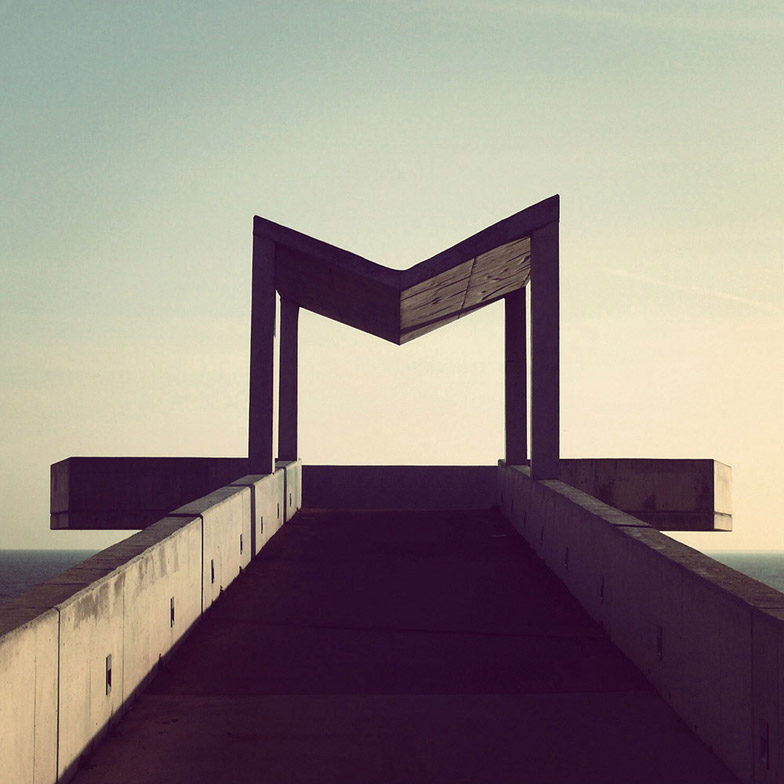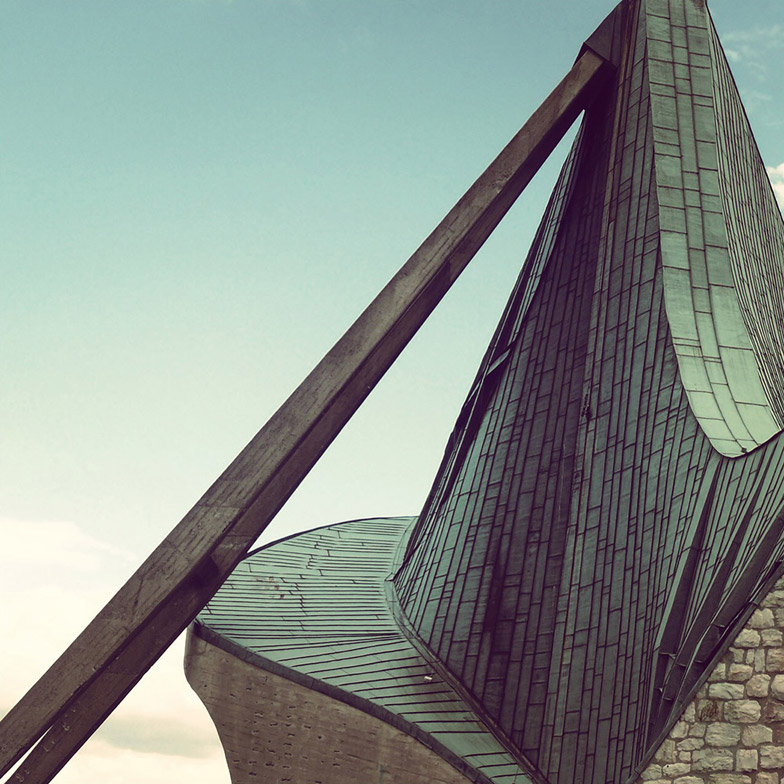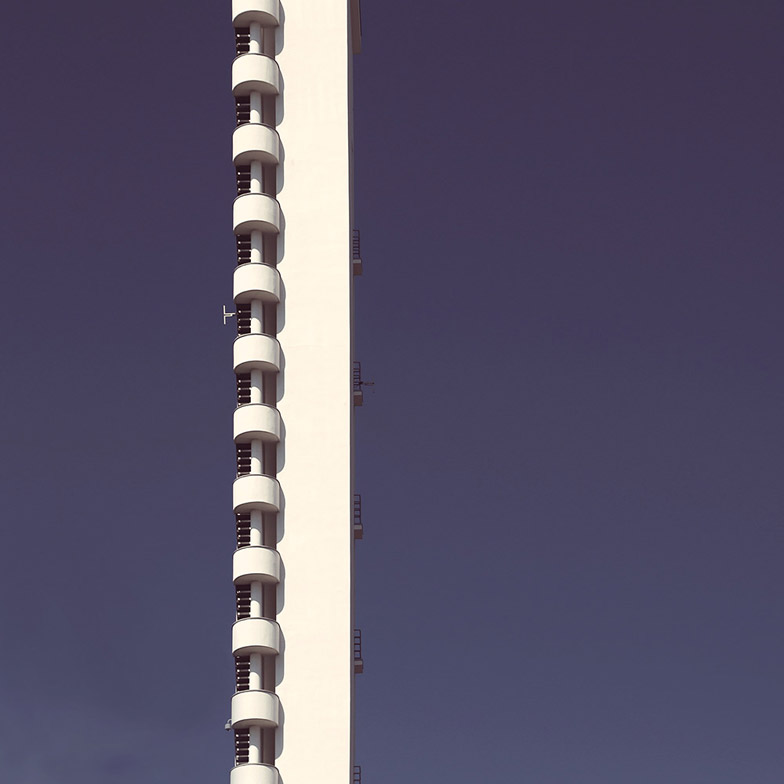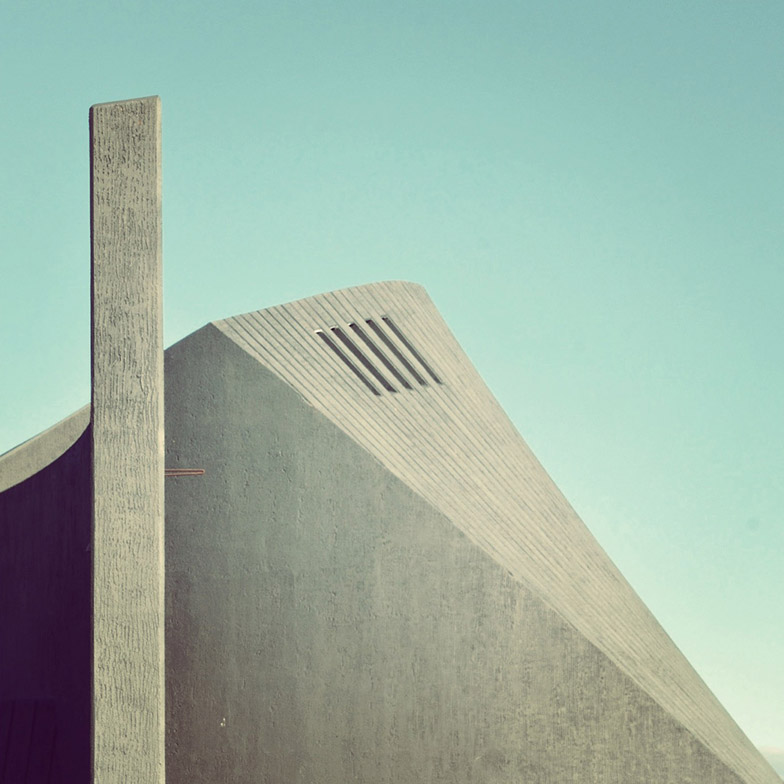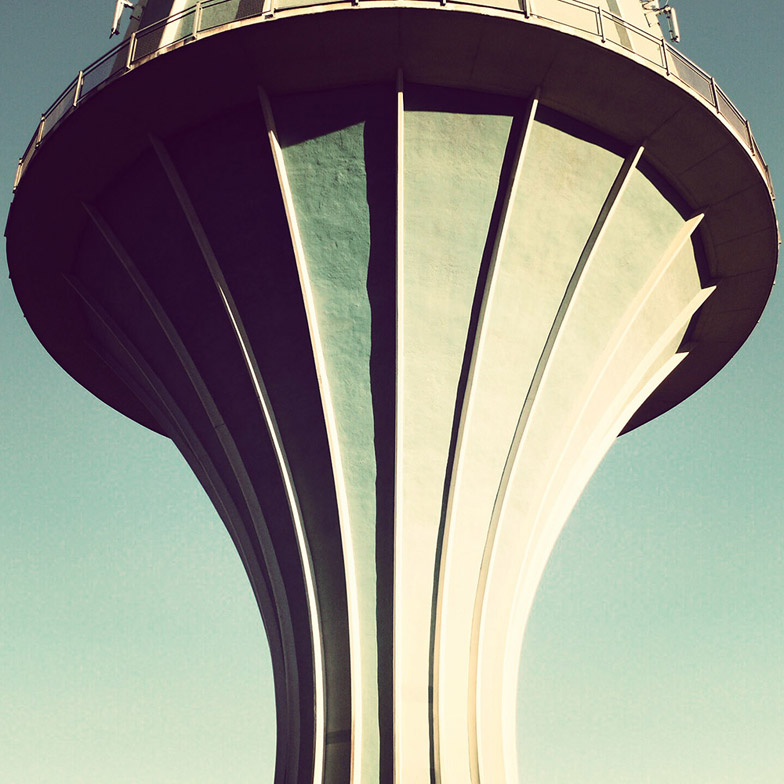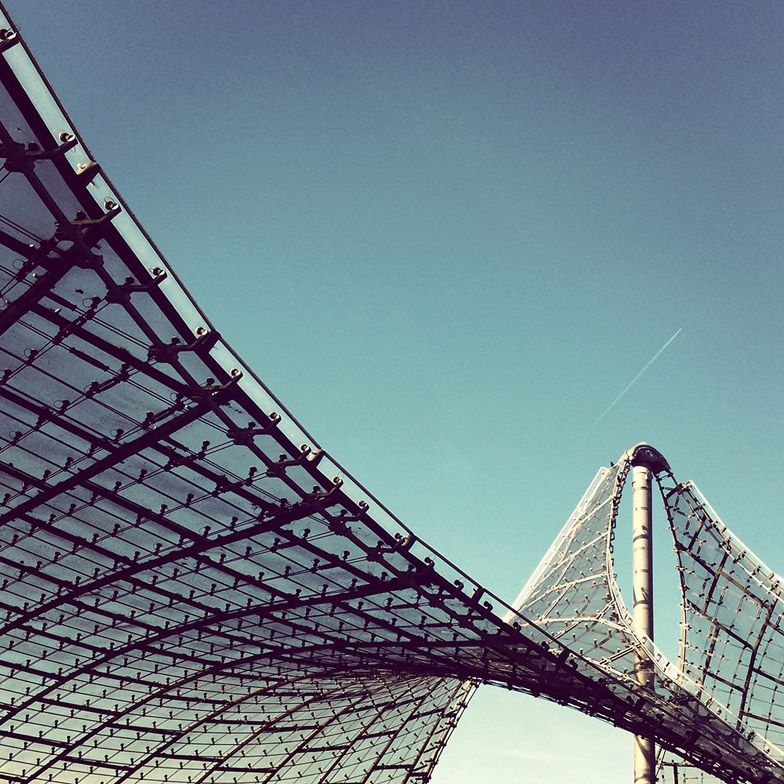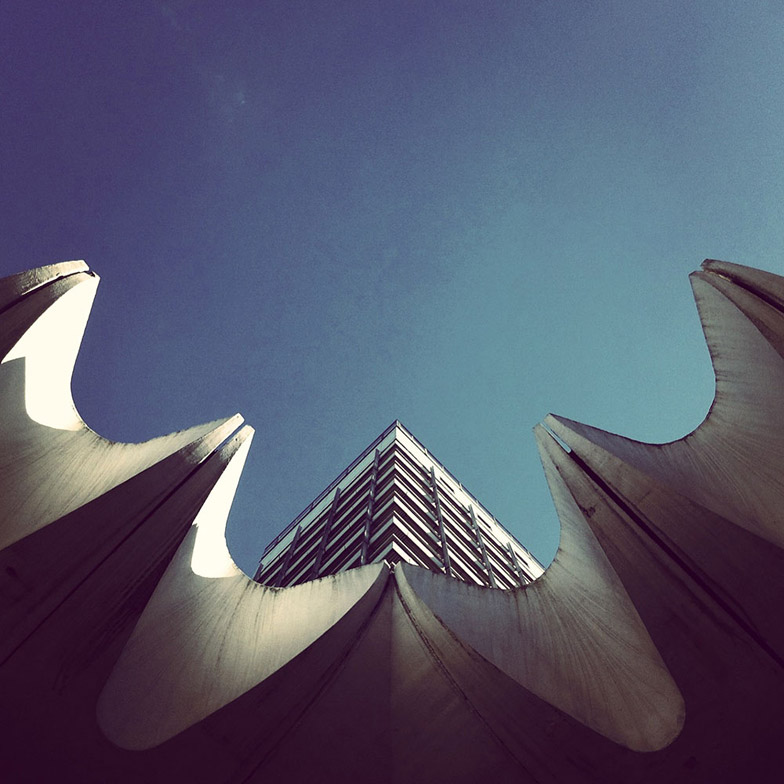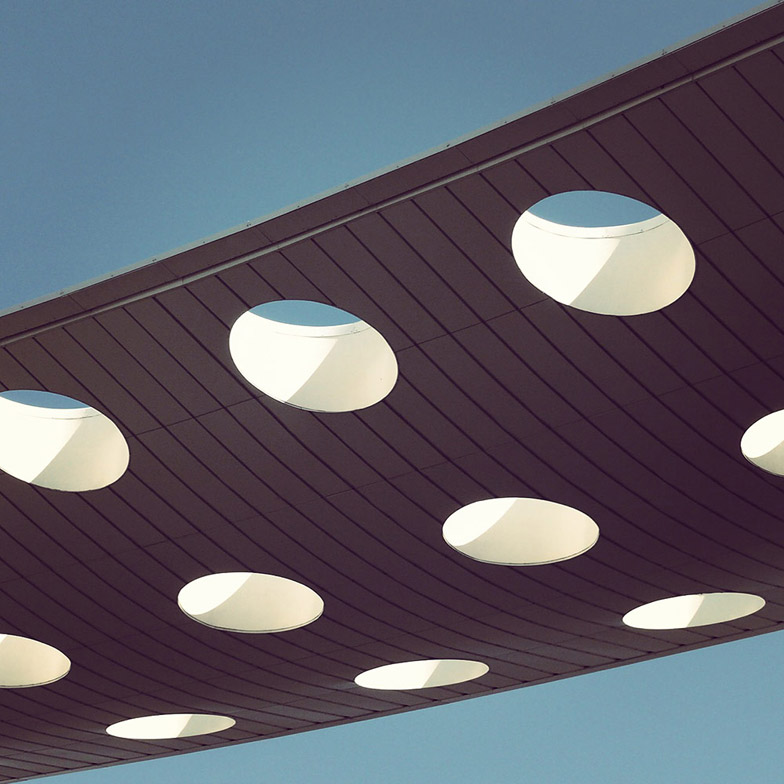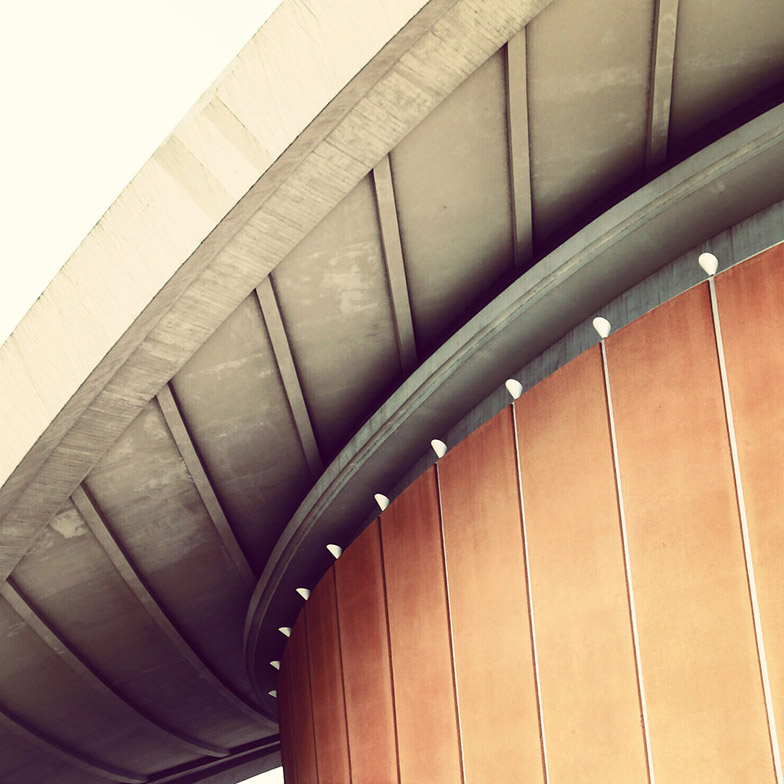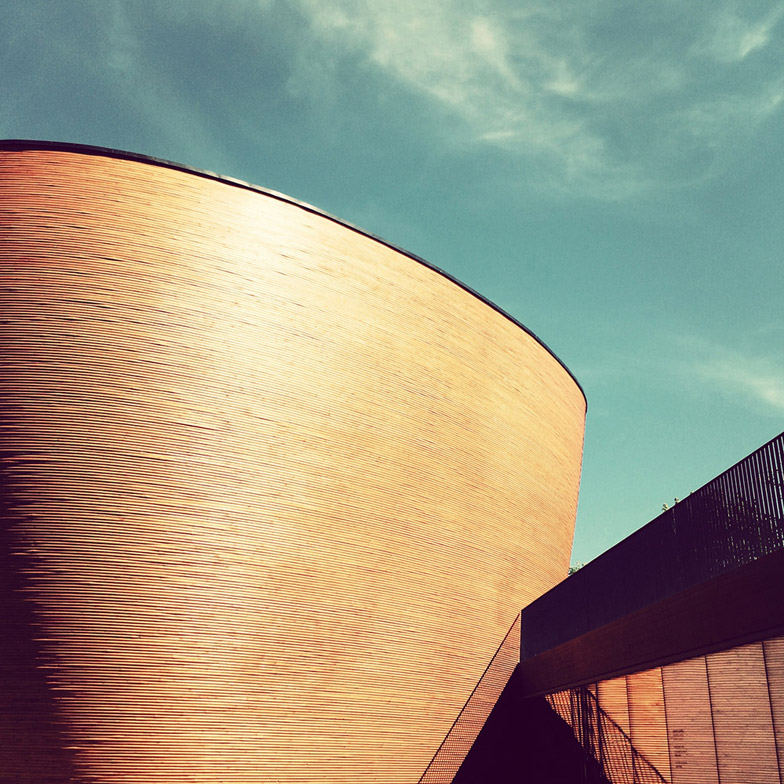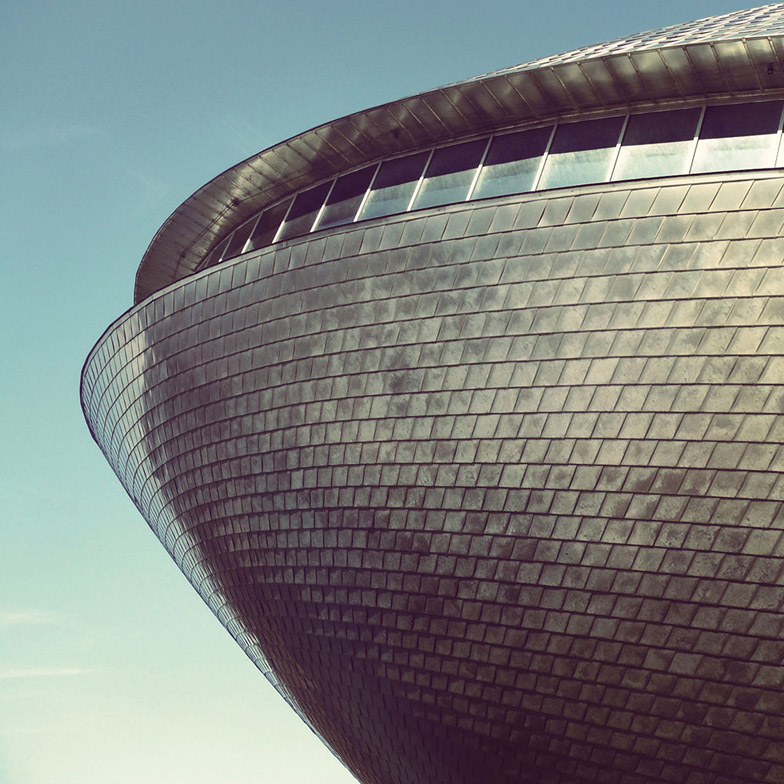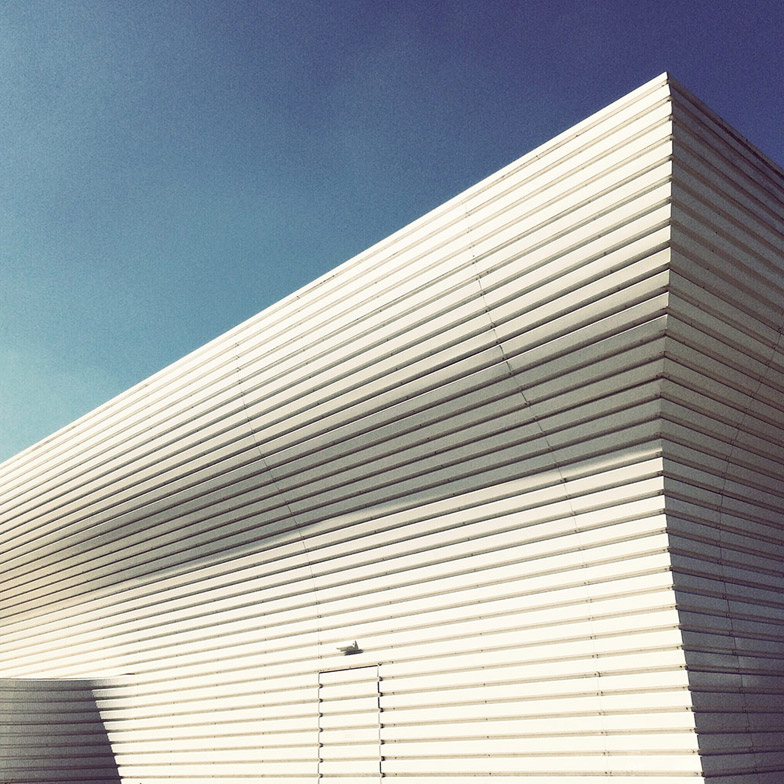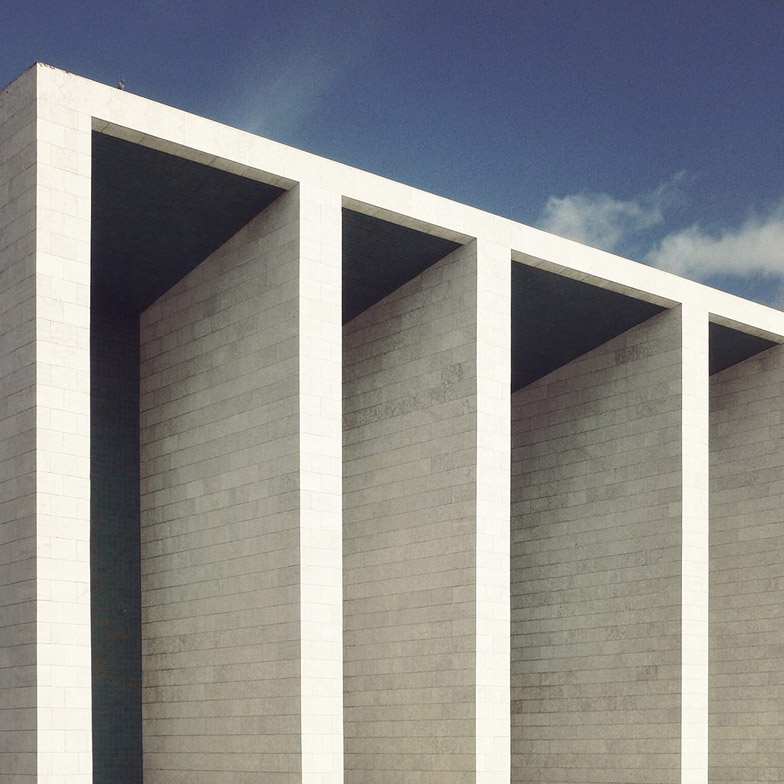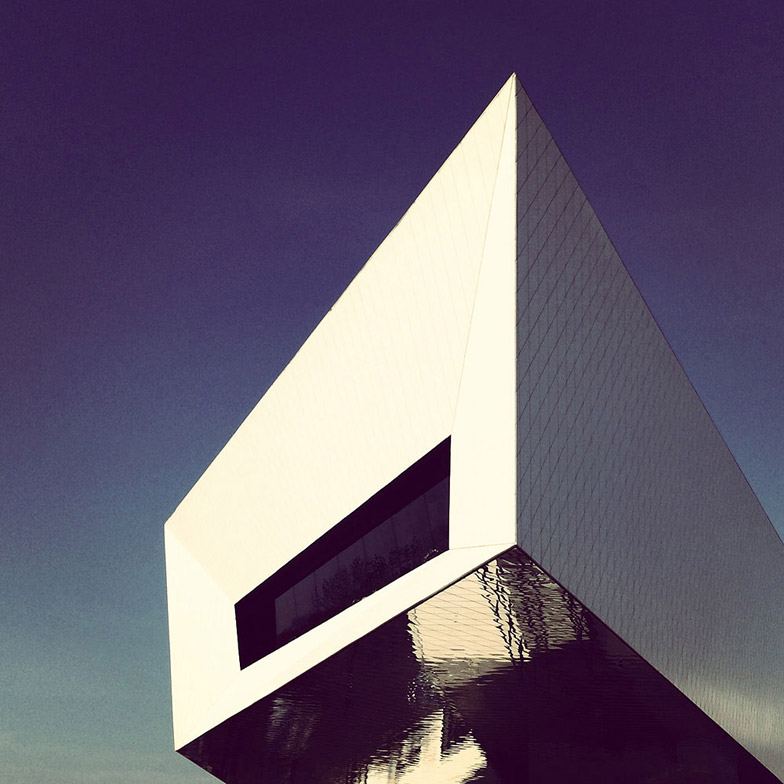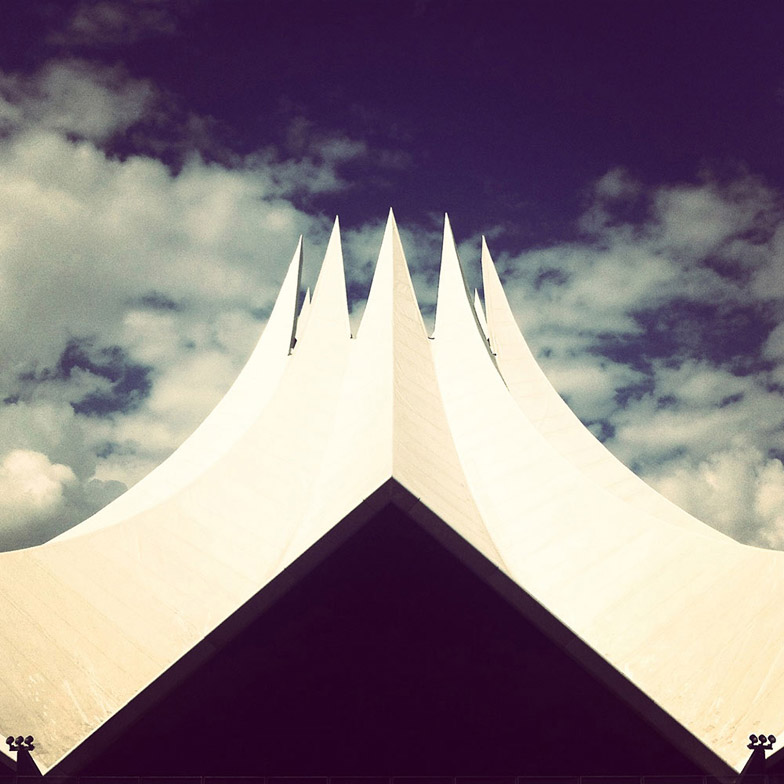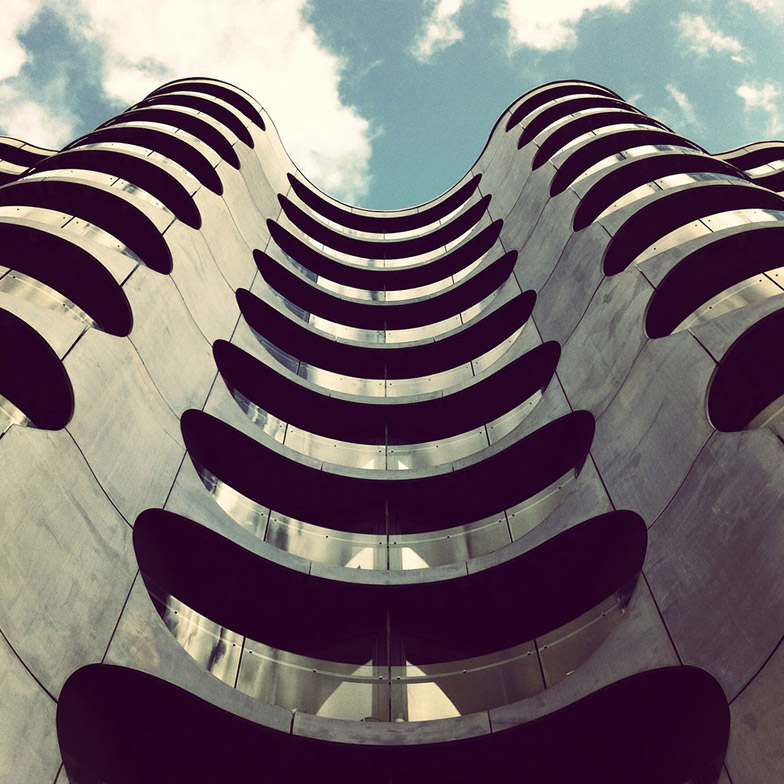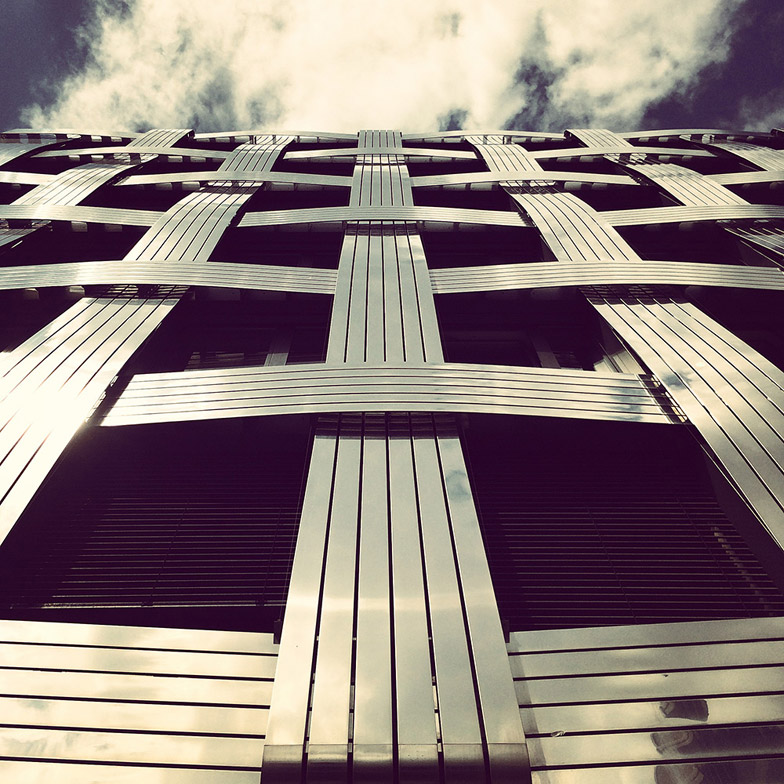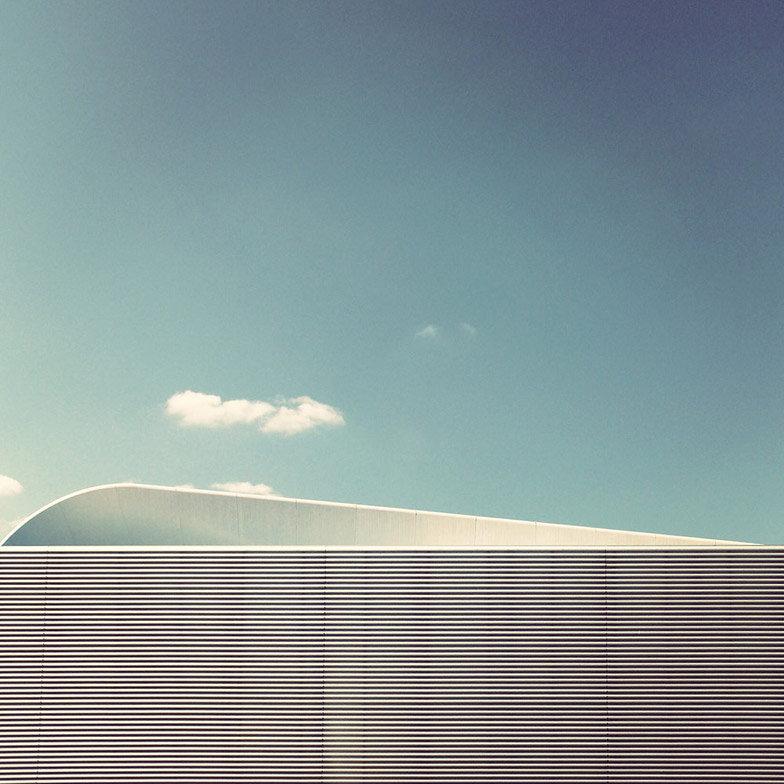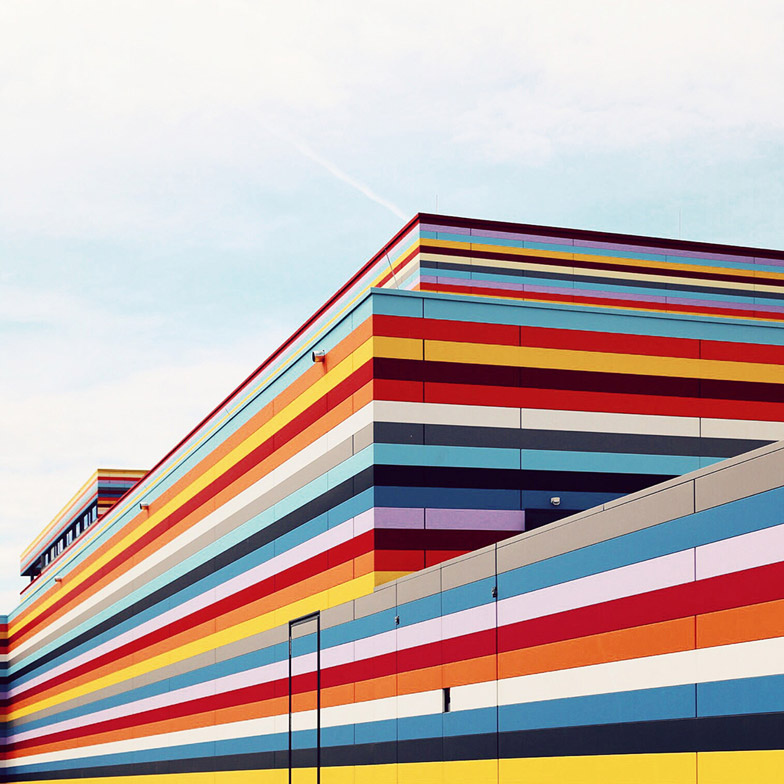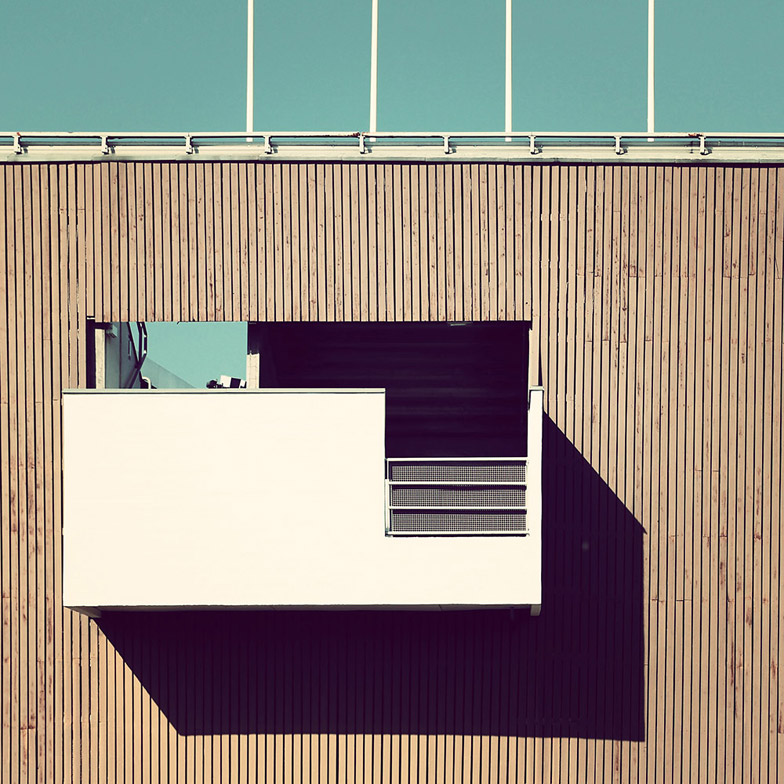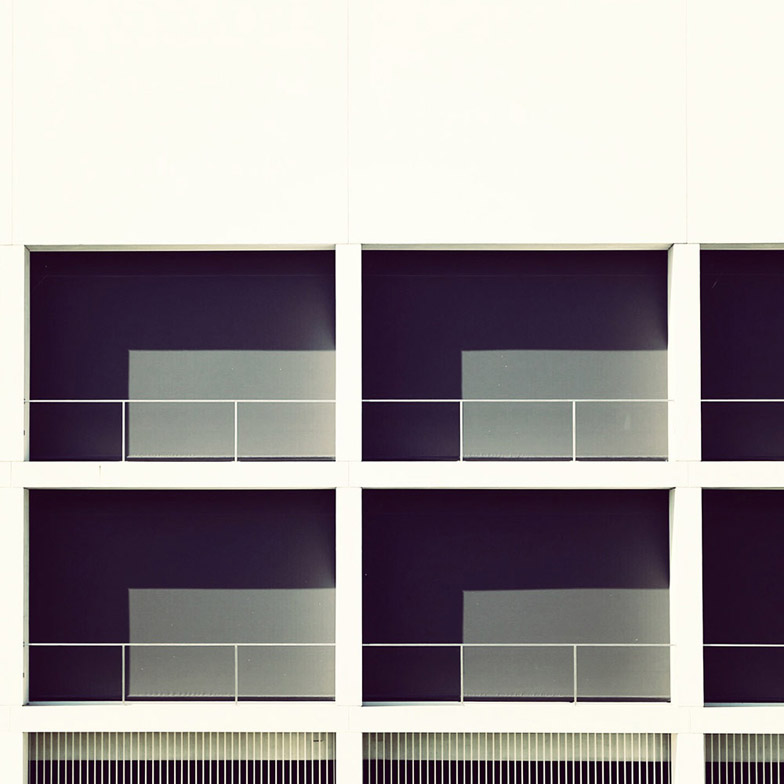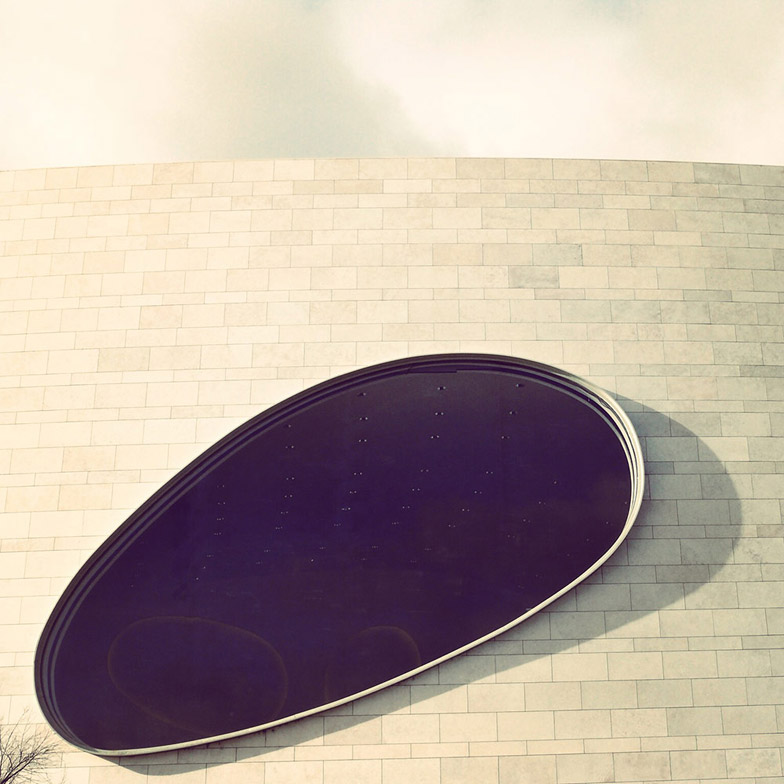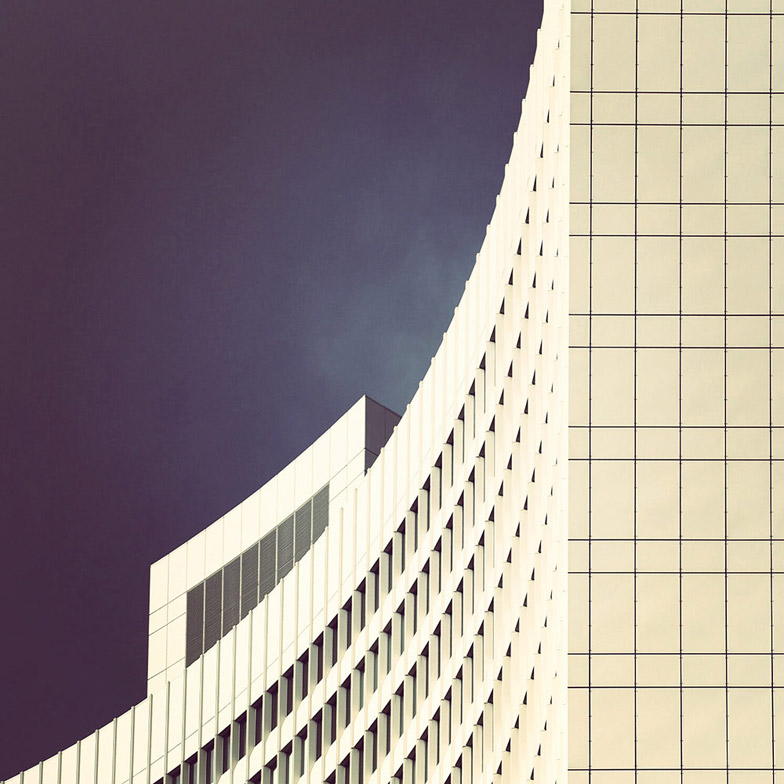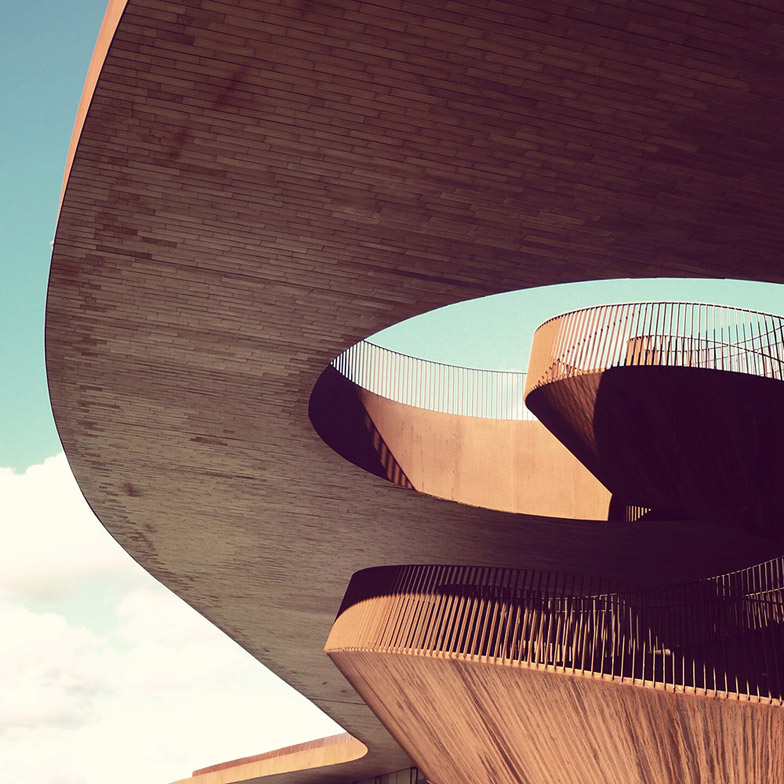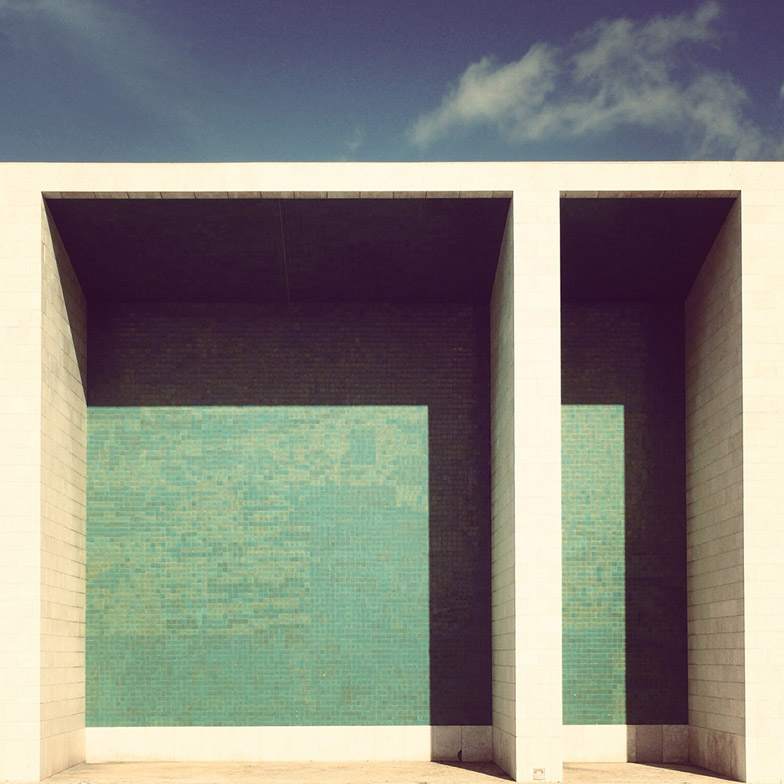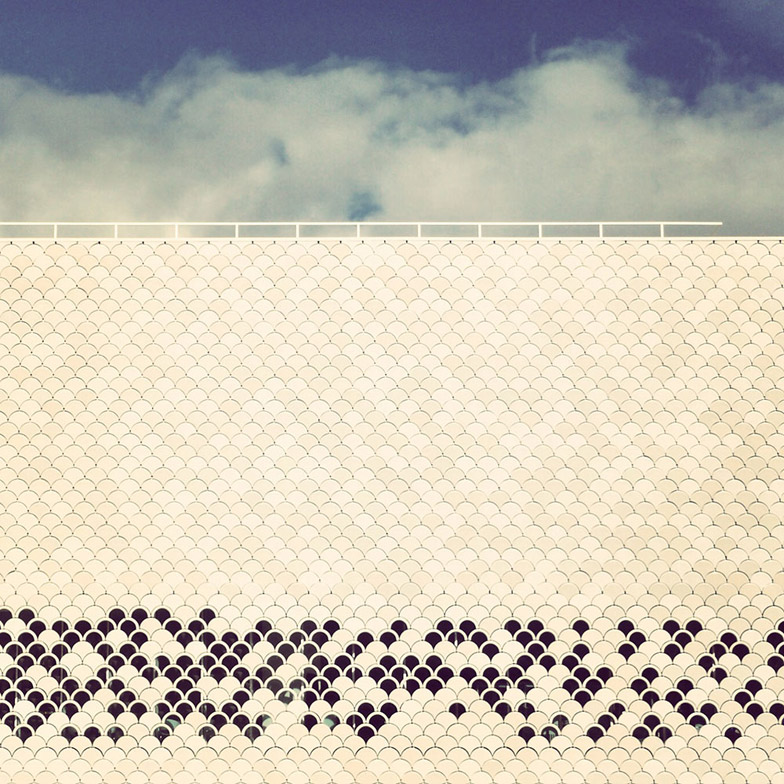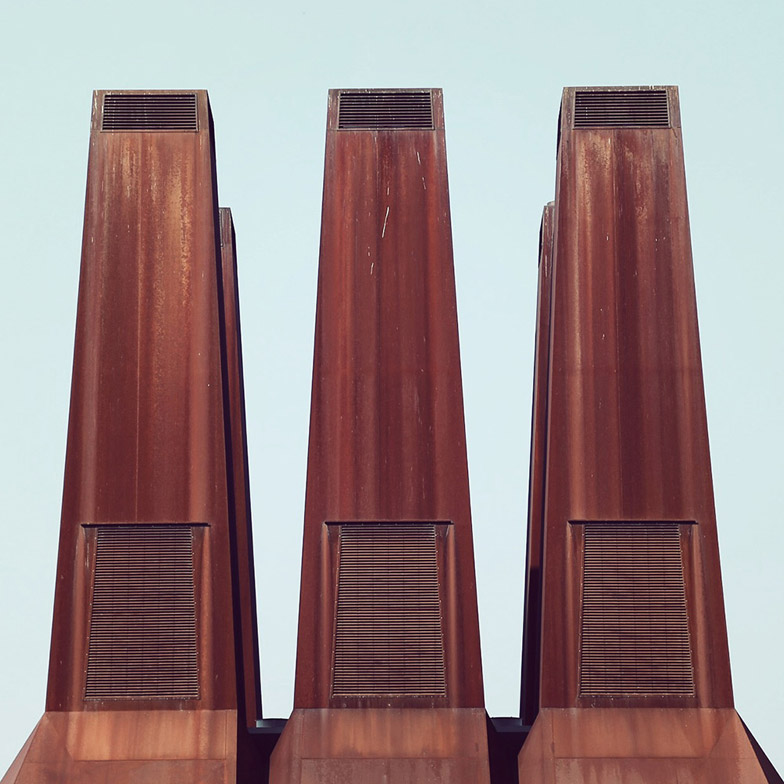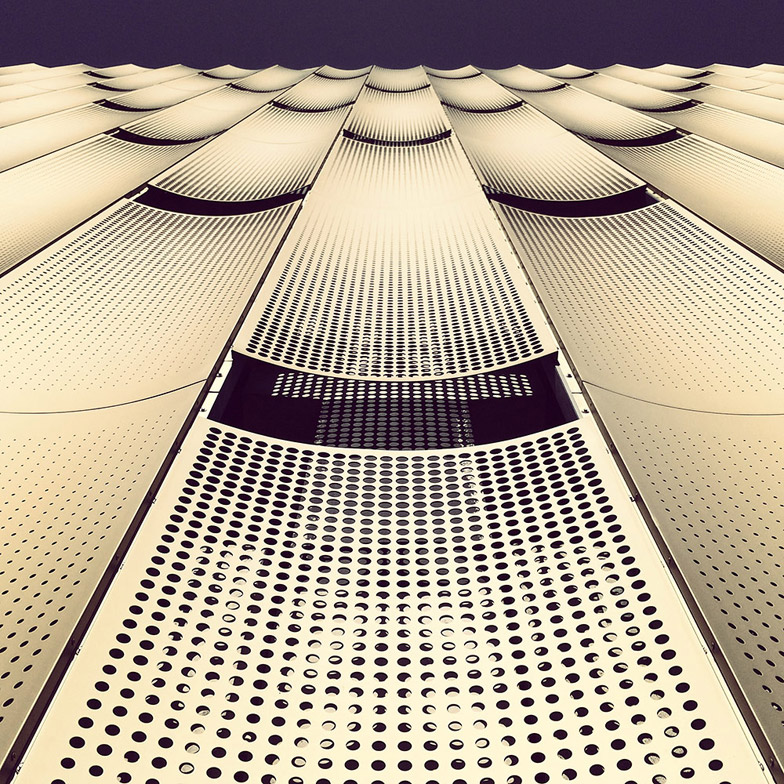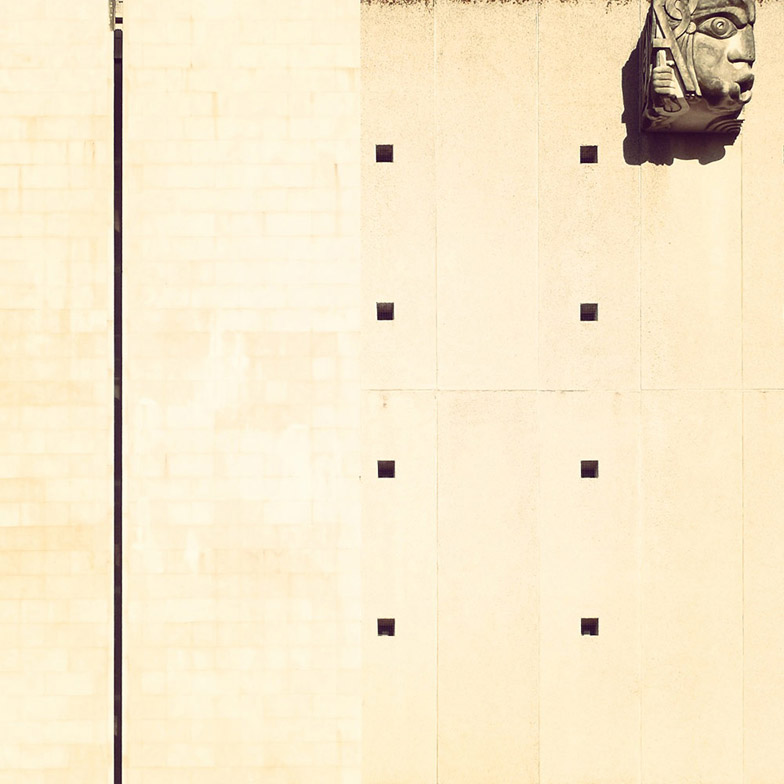Photo essay: a smooth granite church in Iceland and a curvy concrete water tower in Germany are among the architectural structures documented in this series by German photographer Sebastian Weiss (+ slideshow).
Under the pseudonym Le Blanc, Weiss uses Instagram to capture details of buildings he finds all around Europe. Some are close-up views while others show whole facades, but the aim of every image is to abstract the architecture from its context.
The photographer believes his images are representative of a new kind of architectural photography that has emerged because of the popularity of the social media platform. In this essay, he explains why.
The aim of my photography is to abstract urban shapes. I intend to liberate buildings from their spatial context and known surroundings by breaking the city's essence down to the substance. I search for the interaction of forms, materials and structures.
Every city has its individual architectural language, with its own vocabulary, syntax and intonation. During my journeys, I come across these languages in manifold ways. Sometimes they are sonorous and flowery, sometimes they are calm and reserved, sometimes harsh and rational. I am fascinated by the many architectural facets of our urban living spaces and I am thrilled when I am able to discover new letters or words.
The photographic analysis of a building at different times of the day and from various perspectives is similar to the exploration of the onomatopoeic range of a word when being conjugated, declined or used in different contexts.
I was born in the German Democratic Republic and for more than 20 years I have been working as a senior designer in the digital industry. While a civil engineering student, I was inspired by the creative viewpoints of a building as well as its construction. This led me to the University of the Arts in Berlin to investigate the relationship between technology and design. During this time, my passion for architectural photography evolved.
Wartime destruction, the city's division, the decay of building stock and unilateral construction projects in the East and West left behind clear tracks in Berlin. In the end, an architectural composition was born that is characteristic for its contrasts.
Down the line of the fall of the Wall, many spaces for bigger building projects arose at the interfaces of the former section borders.
So a vast number of interesting buildings were erected, which changed the city's face deeply. The heterogeneous architecture in West and East Berlin with its origin in the time of the Iron Curtain, in combination with the architecture of other cultural epochs, excited me. It was then I began to explore Berlin's architectural changes through photography.
Later on, I looked to other cities outside of Berlin in my search for thrilling architecture. This led to my appointment as a photo columnist for the German magazine Architectural Digest.
In my work as a digital designer, the user experience is an important criterion for the success of a product and the desired acceptance by the user. User experience covers a person's perception during the use of a product and includes its design, functionality and performance parameters. I believe that these aspects also play an essential role in architecture.
The criteria for user experience dates back to the Roman architect and engineer Vitruvius, who described the main requirements of architecture as strength, utility and beauty. My photographic work places emphasis on the aesthetics of buildings, not on the documentation of functional benefits.
I publish my photographs mainly on Instagram, because the technical workflow of mobile photography — as well as the interaction within the Instagram community — is fascinating. Since I started using Instagram, my working approach has changed; my photographic style has also evolved. The small picture size of smartphone photographs requires different motifs and new approaches to photographing them.
I am fascinated by the direct communication between Instagram users, by means of the exchange of images from one user's hand to the hand of another person via smartphones.
New applications and services that are based on mobile technology will significantly change parts of our personal life and areas of business. Neither photography nor architecture will be excluded from that development. I am curious to know what kind of effect the use of mobile technologies will have on future architecture, and I am already looking forward to discovering new architectural vocabulary.

